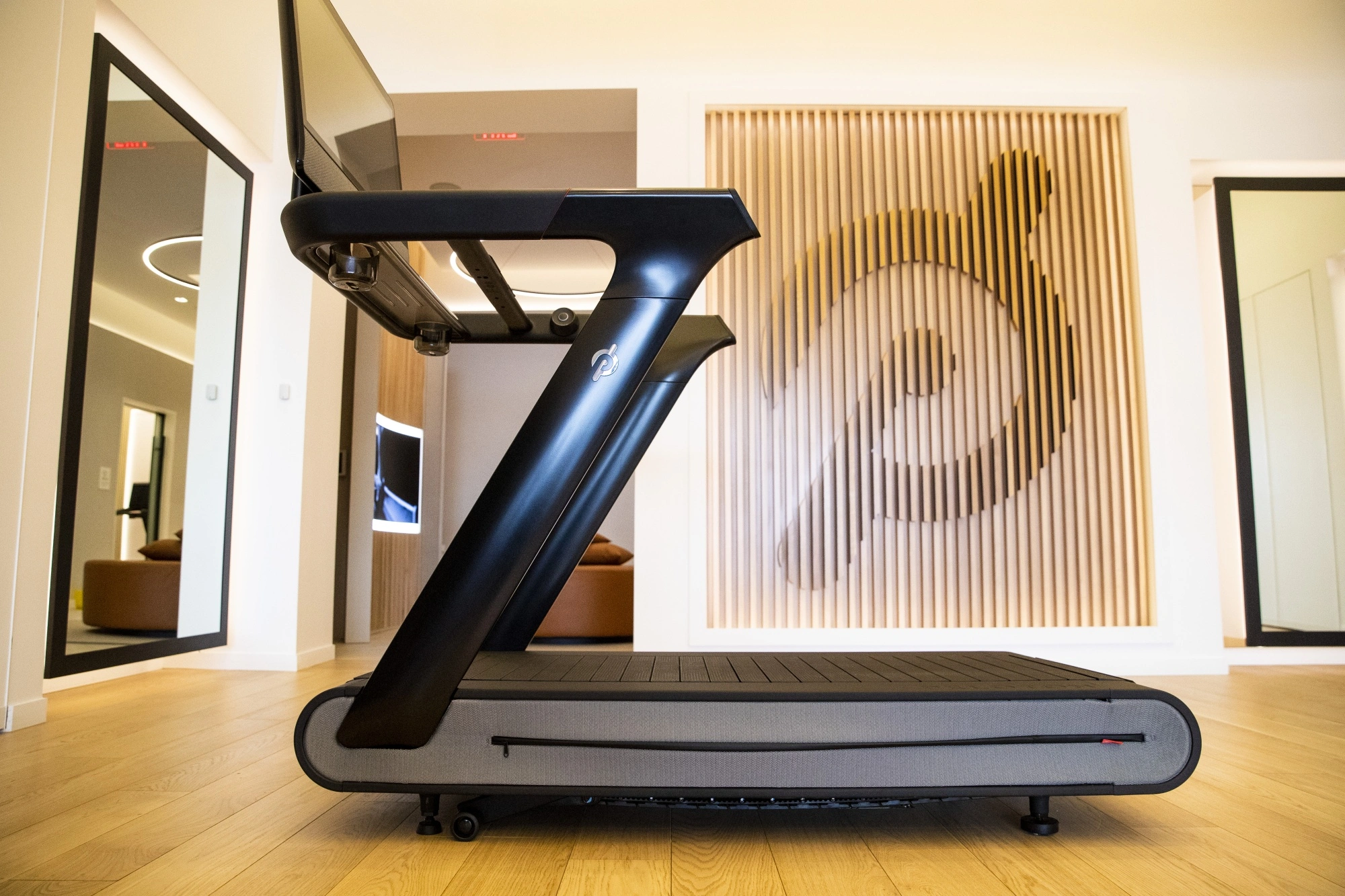Peloton treadmills have gained immense popularity in recent years, offering users the convenience of working out at home with interactive classes and advanced features.
As more people embrace the Peloton fitness experience, it’s important to understand the weight limitations set for the equipment, particularly the Peloton Tread.
In this article, we’ll delve into the topic of the Peloton weight limit for the tread and explore the factors associated with it.
You Might Also like to Read: How Many Amps Does A Peloton Treadmill Use?
Understanding the Peloton Tread
The Peloton Tread is a cutting-edge treadmill that provides users with an immersive workout experience. Designed with state-of-the-art technology and sleek aesthetics, it offers a range of features to enhance your fitness journey.

However, like any exercise equipment, the Peloton Tread has specific weight limits that users should be aware of.
What is the Weight Limit for the Peloton Tread?
Peloton has set a weight limit of 300 pounds (136 kilograms) for the Peloton Tread. This weight limit is carefully determined to ensure optimal performance and safety while using the treadmill.
It is crucial for users to adhere to this weight restriction to prevent any potential damage to the equipment or risk of injury.
Factors Influencing the Weight Limit
Several factors influence the weight limit set for the Peloton Tread. The engineering and design considerations play a significant role in determining the maximum weight capacity.
The treadmill’s frame, motor, and other components are designed to withstand specific loads, ensuring a smooth and reliable workout experience. Additionally, weight affects the wear and tear on the treadmill, potentially impacting its longevity and performance over time.
Safety Considerations
Safety is paramount when it comes to using any exercise equipment, including the Peloton Tread. It is essential to prioritize safety to prevent accidents and injuries during your workouts.
To ensure your safety while using the Peloton Tread, here are a few important considerations:
1. Follow the weight limit: Adhere to the specified weight limit of 300 pounds (136 kilograms) for the Peloton Tread. Exceeding this limit can put excessive strain on the treadmill’s components, potentially compromising its stability and functionality.
2. Proper assembly and setup: When setting up your Peloton Tread, carefully follow the manufacturer’s instructions to ensure proper assembly. This includes securely attaching all components and verifying that the treadmill is on a level surface. A well-assembled treadmill contributes to its overall stability and safety.
3. Regular maintenance and inspection: Maintain your Peloton Tread by following the recommended maintenance guidelines provided by the manufacturer. This may include lubricating the belt, cleaning the machine regularly, and inspecting for any signs of wear or damage. Regular maintenance helps identify and address potential issues early on, ensuring safe and smooth operation.
4. Correct usage: Familiarize yourself with the user manual and instructional videos provided by Peloton. Use the treadmill as intended, following proper form and technique during your workouts. Avoid sudden movements or excessive force that could strain the treadmill or compromise your safety.
Exceeding the Weight Limit

Exceeding the weight limit on the Peloton Tread can have significant consequences. It can strain the treadmill’s motor, belt, and frame, leading to accelerated wear and potential malfunctions.
Additionally, exceeding the weight limit increases the risk of instability and imbalance during workouts, potentially causing accidents and injuries.
It is essential to respect and adhere to the weight limit specified by Peloton for the Tread to ensure your safety and the longevity of the equipment.
Alternatives for Users Above the Weight Limit
If you exceed the weight limit of the Peloton Tread, it’s important to explore alternative fitness equipment options that can accommodate higher weight capacities.
Fortunately, there are several treadmill models available on the market with higher weight limits. Conduct thorough research and consult with fitness professionals or equipment specialists to find a suitable treadmill that meets your specific requirements.
Conclusion
In conclusion, understanding and respecting the weight limit of the Peloton Tread is crucial for your safety and the optimal performance of the equipment.
By adhering to the specified weight limit, following proper usage guidelines, and maintaining the treadmill regularly, you can ensure a safe and enjoyable workout experience.
Remember, safety should always be a priority during exercise, and using fitness equipment within the designated weight limits is essential for minimizing the risk of accidents and prolonging the lifespan of the equipment.
FAQs’
Can I use the Peloton Tread if I’m above the weight limit?
It is recommended to follow the weight limit specified by Peloton for the Tread. Exceeding the weight limit can compromise safety and affect the treadmill’s performance.
What happens if I exceed the weight limit on the Peloton Tread?
Exceeding the weight limit can strain the treadmill’s components, potentially leading to accelerated wear, malfunctions, and safety hazards.
Are there any warranties available for Peloton Tread users?
Peloton provides warranties for its products. It is advisable to review the warranty terms and conditions provided by Peloton for specific coverage details.
Can I adjust the weight limit on the Peloton Tread?
The weight limit of the Peloton Tread is set by the manufacturer and cannot be adjusted by users.
What should I do if I have concerns about the weight limit of my Peloton Tread?
If you have concerns about the weight limit or any other aspect.
Thanks For Visiting!
Related Articles:
